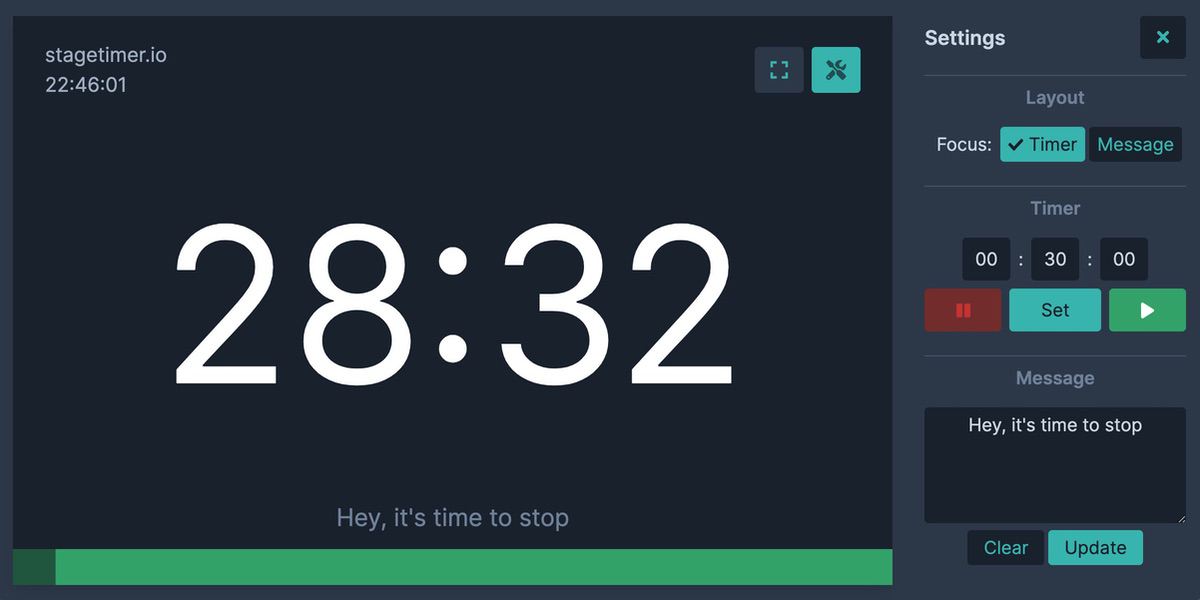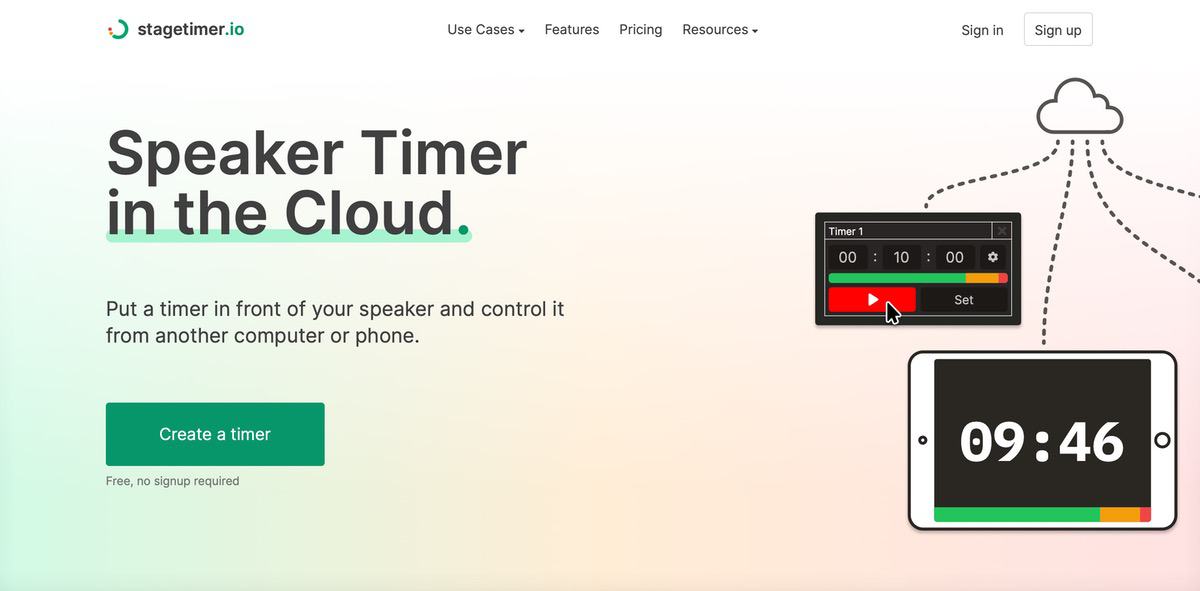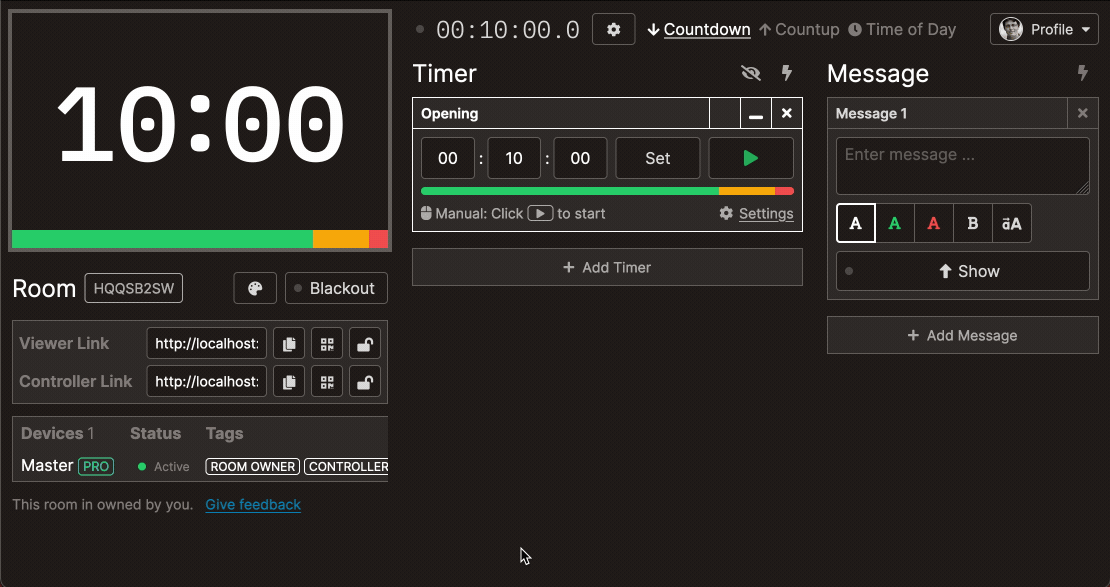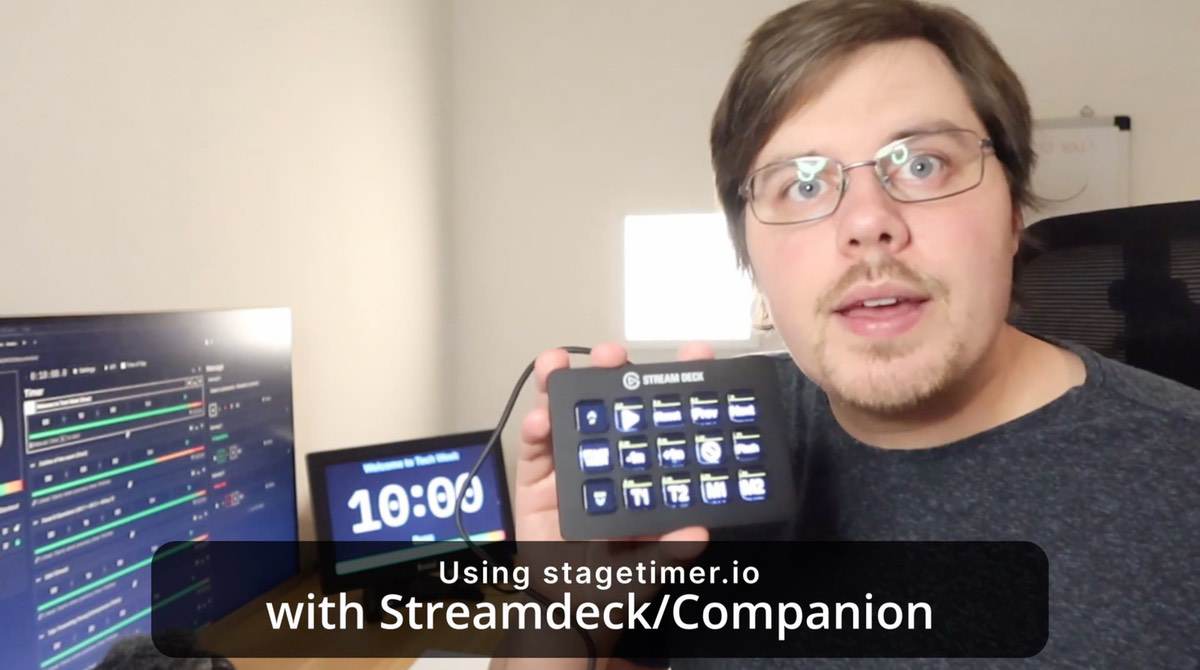Building stagetimer.io, and what we learned along the way
 Liz Hermann
Liz Hermann No, it cannot be that there is no other way to time speakers. This is what came to Lukas’ mind when he saw his friend running back and forth in a studio. He would start the timer on a tablet in front of the speaker and then run to the control station to start the recording. After that visit in November 2020 to the studio, Lukas started to think if there wasn’t a better way to create and control a timer in the browser so it could be easily shared with speakers.
How we got started
The “we” is being generous here. Lukas started it all by himself. This was just a personal project to have a feeling of what it is like to build something and try to put it on the market. An experiment that initially took him only a weekend to build and release, but ended up leading to something much bigger.
Putting a timer together was not difficult at all. Three days were more than enough to create the timer. The many aspects of selling software as a service were the real challenge. Finding a user authentication system, a payment provider, host it on a public server, and not to mention the issue of security, since you have to validate access. You also have to test and monitor the app to make sure it is running properly. And this is just to name a few things.
The learning curve was steep, but the process of building the software was quite useful and taught many practical lessons on how to run a SaaS company. The app was surprisingly well received and it was being used by people around the world in its free version.

Releasing a paid version
When you are creating an app for the sake of learning, one question keeps coming to mind: “will anybody even want to buy this tool?” Well, nothing better than putting it to the test. Once the paid version was released in June 2021, a simple post was created and posted on Reddit to see what the response would be.
To say that we were surprised that someone bought the monthly pro subscription almost right away is a bit of an understatement. And no, it’s not as if we could go out for more than a burger with the gains, but the slight shock was that maybe such a tool was indeed useful enough for people to want to pay for it. Things start to look real once you get your first few paid customers. And that goes for the good part of it (the money), and the more serious part (the responsibility).
All is well while you are simply providing a free tool with no strings attached. The scary part is to release a paid version. It sounds great to start monetising your product or service, but it also means that you are now fully responsible for bugs and problems in the software. Expectations are now higher and things get much more serious.

Oh, that is a great tool, but…
There are many joys that come with it though. You will never forget your first superfan. Receiving feedback from your most enthusiastic users is just the nicest feeling. At this point, the whole enterprise is so small that you cannot even send swag to thank your early adopters for embracing the app the way they did. You simply appreciate the feedback and try to listen carefully to your users’ needs and expectations for the software.
The post on Reddit already generated quite a few suggestions for improvement and several tweaks to the app. The most exciting and at the same time challenging part starts: knowing that you can improve the service in so many ways.
What was born as a cloud-based timer to address the issue of controlling time remotely, now could be even more useful if it had a desktop app. What we thought would be useful for studios, was now being used by universities, TV channels, and even in the parliament of a country. We were always amazed to find out how Pro subscribers were using the timer.
The more we talked to our growing base of customers, the more we learned about different features that would make the app even more useful for event production companies, audiovisual professionals and all sorts of other users. Our backlog grew bigger and bigger and honestly, by now we not only have more than enough work to do, but we can even create new products or services that could complement stagetimer.io with other tools and integrations.

What’s next?
That leads us to the inevitable fact that this pet project has become way bigger than we imagined at first and will still have many iterations coming up. As we work on new features, we also see how we can improve the payment options and how the tool can become even more efficient for producers. We have been working on building the app in such a way that it displays the timers as a rundown that will make the life of producers even easier.
We also have a more clear vision now that while there are tools out there for building rundowns and time events, these are usually sold as a full package together with many other tools and features that shoots the price up. Talking to our customers made us see how we are uniquely positioned to serve the small to medium size businesses that need efficient tools for timing, but could not afford expensive software. Providing an alternative to ProPresenter and Shoflo, for example, was not at all our initial plan (since we didn’t even know about the market at first), but it became a natural way to go.
The interesting thing about trying something simply for the sake of learning how it works is that you may fail miserably, but you may also end up finding a gap in the market that you can fill nicely. In either case, you will learn more than you expected at first.
